Templeseeker is a participant in the Amazon Services LLC Associates Program, an affiliate advertising program designed to provide a means for us to earn fees by linking to Amazon.com and affiliated sites. Other affiliate links may be used on this blog on one day in Istanbul, but they do not impact on the price that you pay and they do help me to get this information to you for free. Read my privacy policy for more information regarding affiliates.
Let me be honest – Istanbul is a fantastic place to visit and warrants much more time than just one day in my opinion. I stayed in Istanbul for a week as a solo female traveller and there is still more than I would love to see! But I understand that many people are on restricted time schedules or airline stopovers and only have one day to spend there. I actually met a few travellers used Istanbul as a springboard to South America due to the flight from Istanbul airport. Don’t worry, if you plan carefully and don’t mind picking up the pace a bit, you can see the main sites if you spend just one day in Istanbul.
When to Visit Istanbul
Istanbul is a city with a rich history and culture, and it can be a great destination to visit at any time of year.
If you prefer warm weather and long days, the best time to visit Istanbul is between April and October. During these months, temperatures range from the mid-60s to mid-80s Fahrenheit (around 20 to 30 degrees Celsius) and there are plenty of sunny days. Keep in mind that July and August are the hottest months, with temperatures sometimes reaching into the 90s Fahrenheit (30s Celsius). For some people, August is just too hot and crowded and they prefer to avoid Istanbul at this time.
If you prefer cooler weather, the best time to visit Istanbul is between November and March. During these months, temperatures range from the mid-40s to low 60s Fahrenheit (around 10 to 20 degrees Celsius).
I went to Istanbul in March which was perfect – not too hot and not too crowded! If you only have one day in Istanbul then I would advise that you plan your day based on the opening hours of the main sites such as the Blue Mosque and Topkapi Palace.
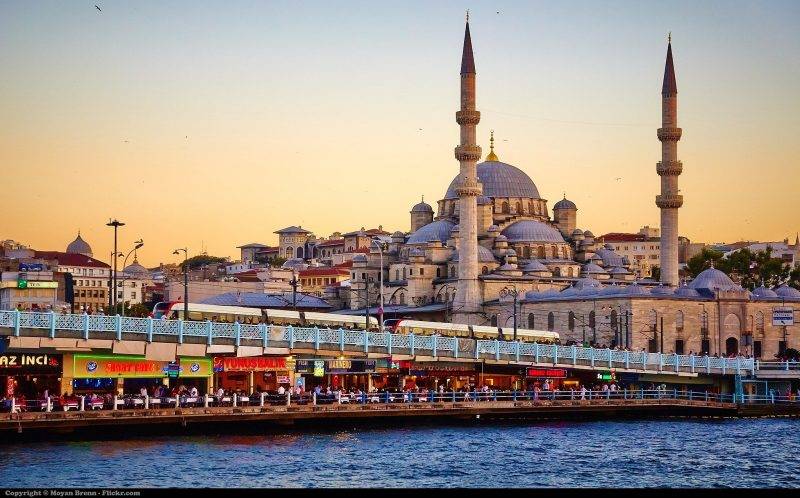
Tips for spending one day in Istanbul
You will need to be comfortable and well organised if you have just one day in Istanbul, so here are my top tips:
- Wear decent walking boots as you will be covering a lot of ground.
- Plan your day in advance and consider holidays (such as Ramadan) and dates when main attractions will be closed.
- Avoid Tuesday because Topkapi Palace (one of the most amazing sites in Istanbul) is closed on Tuesdays and the Blue Mosque is closed on Fridays (due to Friday prayers).
- The Grand Bazaar is open from 8.30am-7pm every day except Sundays and the first day of religious holidays.
- If you shop in the Grand Bazaar remember to haggle! It’s not offensive, it is a normal part of the culture in Turkey. You can probably get a good deal if you are buying more than one item – ask for a special discount!
- Ideally plan your day in Istanbul for a Wednesday or Thursday if possible so that you don’t miss out on the main sites.
- Take a battery pack and charging cable so that you can charge your smartphone on the go – you don’t want to be needing to head back to the hotel to charge your phone.
- Grab the Istanbul Lonely Planet – Although there is a lot of information on blogs, it’s great to have the printed map and restaurant recommendations in there.
- Dress conservatively – Ensure that you are wearing comfortable clothes that cover your legs and shoulders. Ladies you should not have your cleavage in display and you should also take a headscarf for covering your head inside the Blue Mosque.
Where to Stay in Istanbul
Pick a hotel or youth hostel close to or in the Sultanahment District – this is where most of the main sites are and if you only have one day to spend there you don’t want to be travelling by public transport. You will want everything to be accessible on foot. I recommend:
- Budget – Sultan Hostel (they have dorms and private rooms)
- Mid Range – Hotel Sultan Hill (3* with WIFI)
- Luxury – Four Seasons Hotel Istanbul at Sultanahmet (Our century-old neoclassical 5* hotel a stones throw from the main sites)
How to spend one day in Istanbul
If you want to spend one day in Istanbul then I would recommend that you arrive at Sultanhamet Square before 9am to take photos of the outside of Hagia Sofia and the Blue Mosque BEFORE they open and before the area gets busy with tourists. I would say arrive at 8am and give yourself half an hour of photography around the square and for therein buildings and the Obelisk of Theodosius.
You will then need to choose to do either Topkapi Palace before lunch and the Blue Mosque and Hagia Sofia after, or the other way around (start with the Blue Mosque and Hagia Sofia in the morning and then Topkapi Palace after lunch). These are the three main sites of Istanbul and MUST NOT be missed!
My suggestion is to photograph the outside of the Blue Mosque and Hagia Sofia but then start with Topkapi Palace and get in the queue for it before 9am (or pre-book a guided tour). Topkapi Palace was the only place that I experienced extensive queues during my time in Istanbul (especially at the Treasury).
AM – Topkapi Palace (approx 3 hours)
Topkapı Palace is a historic palace in Istanbul that was the primary residence of the Ottoman Sultans for nearly 400 years (1465-1856). It is a complex of buildings located on a hill overlooking the Golden Horn, a natural harbor on the Bosphorus Strait. The palace is a UNESCO World Heritage Site and is one of the most beautiful attractions in Istanbul.
The palace was built in the 15th century by the Ottoman sultan Mehmed II, also known as Mehmed the Conqueror. It was expanded and renovated over the centuries by successive sultans. The palace served as the center of the Ottoman Empire’s government and administration, as well as the primary residence of the sultans and their families.
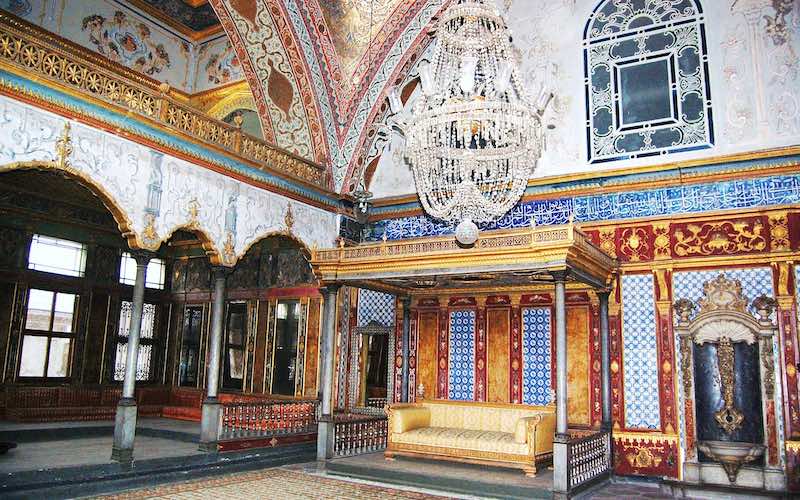
The palace complex is divided into four main courtyards, each with its own functions and buildings. The first courtyard contains the Imperial Gate, which was the main entrance to the palace and was reserved for the use of the sultan and his family. The second courtyard contained the Divan, or council, hall, where the sultan’s advisors and officials met to discuss state affairs. The third courtyard contained the Harem, the private quarters of the sultan’s family and concubines, as well as the imperial treasury and the library. The fourth courtyard contained the kitchens, bakeries, and other service buildings.
The palace also contains a number of museums, including the Imperial Treasury Museum, which displays a collection of precious objects and artifacts from the Ottoman Empire, and the Imperial Harem Museum, which displays the private quarters of the sultans and their families.
This palace is stunning and you will be there for a good few hours so make sure that you have a good camera and a water bottle with you. The views from the palace across the Bosphorous are some of the most beautiful views in Istanbul.
Lunch Break
You will be spoilt for choice on restaurants in the area and there is something for every palette and every budget. Make sure that you try a Turkish tea and a piece of Baklava after lunch. Baklava is the Turkish sweets made from pastry and honey – they are gorgeous!
If you take an hour for lunch, you can start with the Blue Mosque and Hagia Sofia at around 1pm and this will take you to around 4pm, leaving just about enough time for some shopping at the Grand Bazaar!
PM – Blue Mosque and Hagia Sofia
These two sites were basically the reason for me taking the flight to Istanbul! The Blue Mosque and Hagia Sofia are stunning and you need to allow at least one hour and a half for each of them.
Blue Mosque 60-90 minutes
You will be pleased to know that the Blue Mosque welcomes non-Muslim tourists as long as you respect the dress code and avoid prayer time (it is an active Mosque). Women should take a head scarf or pashmina – choose one without animal or people in the prints. Something neutral and plain or geometric patterned like this would be ideal….
The Blue Mosque was built in the early 17th century by Sultan Ahmed I during the Ottoman period. It was designed by the architect Mehmed Aga, who was inspired by the Hagia Sophia, another iconic mosque in Istanbul.
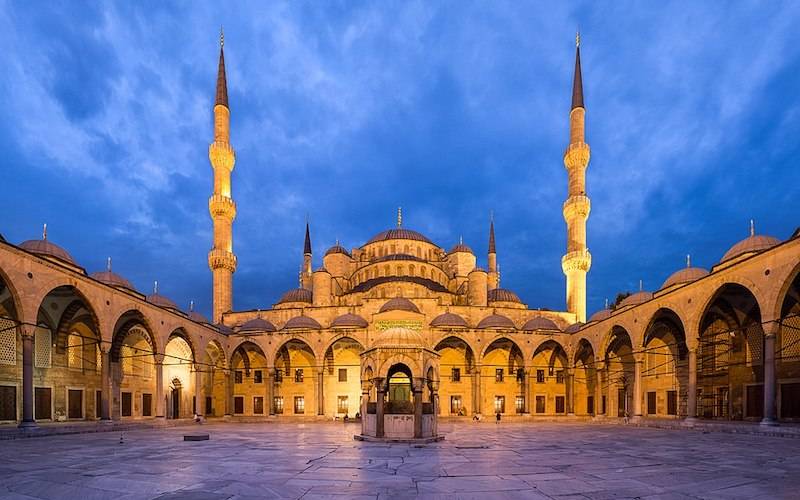
The Blue Mosque is known for its six minarets, which are tall, slender towers that are used for the call to prayer. It is also known for its blue Iznik tiles, which cover the walls of the interior and give the mosque its name. The tiles were made in a town called Iznik, which was known for its ceramics, and were imported from there for use in the mosque. The interior of the mosque is decorated with intricate patterns and designs, including intricate calligraphy and geometric patterns. The main prayer hall is supported by four large pillars and is topped by a large dome.
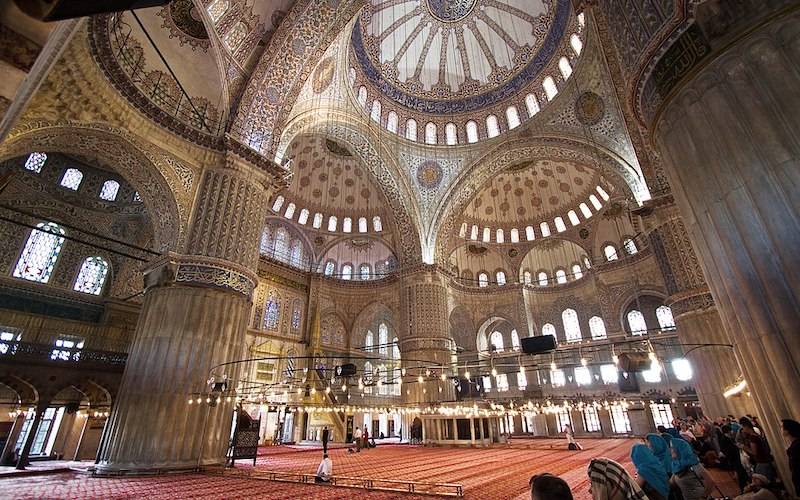
Hagia Sofia – 90 minutes
Hagia Sophia is a UNESCO World Heritage Site that was originally built as a cathedral in the 6th century AD. It was later converted into a mosque in the 15th century, then a museum (which was its status at the time I visited) and now it is a Mosque again.
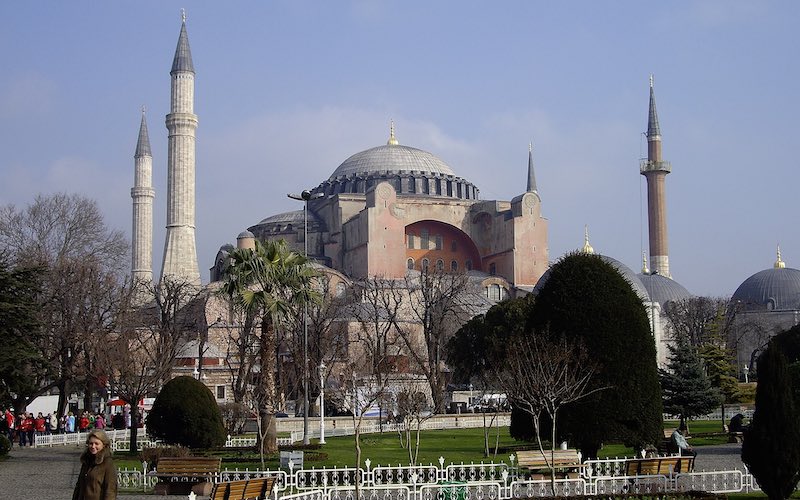
Hagia Sophia was built by the Byzantine Emperor Justinian I in the 6th century as the cathedral of Constantinople, the capital of the Byzantine Empire. It was designed by the architects Anthemius of Tralles and Isidorus of Miletus and is one of the most important examples of Byzantine architecture. The building was constructed using a combination of traditional Roman and Greek building techniques, and is notable for its massive pendentive dome.
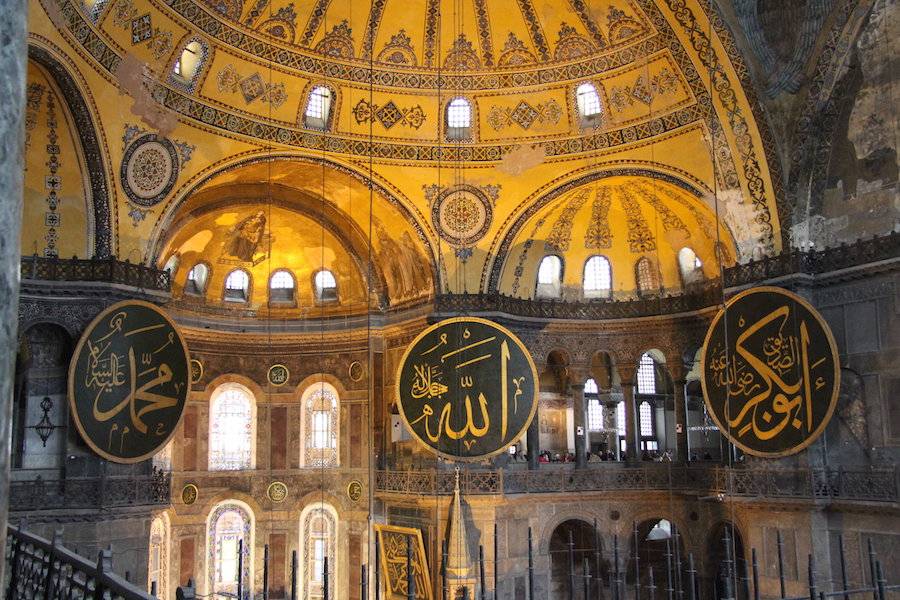
Hagia Sophia was used as a model for many other churches and cathedrals throughout the Byzantine Empire and the Islamic world. In the 15th century, following the conquest of Constantinople by the Ottoman Empire, the building was converted into a mosque. The Ottomans added minarets, or tall, slender towers used for the call to prayer, and other architectural features to the building.
At the time I visited Hagia Sofia it was a museum. I was lucky enough to see detailed mosaics of Jesus, Mary and the angels. However, Turkey’s President Recep Tayyip Erdoğan announced the decision in 2020 to turn Hagia Sofia back into a Mosque once again, and I believe that since that decision was made, these mosaics have been covered up to turn it into a more respectful Muslim prayer space. Regardless as to its religious usage, the building is stunningly beautiful inside and should not be missed. As it is now a practicing Mosque, remember to avoid prayer times when you visit as a tourist and behave respectfully.
Early Evening – Head to the Grand Bazaar
If you are not totally knackered from that intense site seeing itinerary, you will be pleased to know that you may just about have time for a spot of shopping at Istanbul’s Grand Bazaar. The above site seeing schedule should finish around 4pm or 4.30pm and the Grand Bazaar is open until 7pm (every day except Sundays and the first day of religious holidays). You can easily walk to the Grand Bazaar from the Sultanahmet attractions.
Grand Bazaar Istanbul
The Grand Bazaar is a historic covered market and is one of the largest and oldest markets in the world. It is located in the Fatih district of Istanbul and is home to thousands of shops, stalls, and vendors selling a wide variety of goods, including clothing, jewelry, textiles, ceramics, leather goods, and souvenirs.
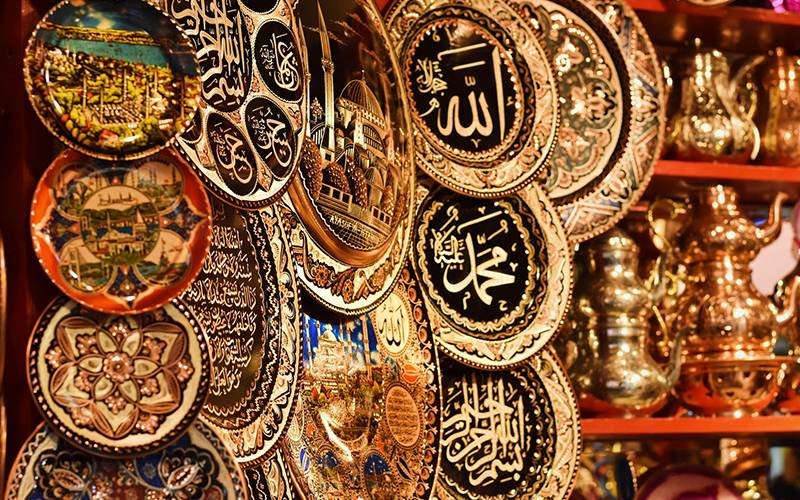
The Bazaar has a long history dating back to the 15th century. It was originally established as a market for the city’s merchants and traders, and has grown and evolved over the centuries. Today, it is a bustling and vibrant place where visitors can shop for traditional Turkish goods and souvenirs.
The Grand Bazaar is divided into different sections, each with its own specialty. For example, the Bedesten is a covered market area that was originally used for the storage and sale of textiles and other goods. The jewellery section is known for its gold and silver jewellery, while the ceramics section is known for its traditional Turkish ceramics and tiles.
The stall holders in the Grand Bazaar are friendly and they will try to lure you into their shops with funny and entertaining phrases. It didn’t feel unsafe to me at any point and the shop keepers will friendly rather than pushy. Remember though, if you appear to take an interest in something, they will expect you to buy. Don’t forget to haggle – the first price isn’t always the last price! I bought some lovely Turkish. compact make up mirrors for a few friends and family members. Because I bought quite a few of them I got a good price – I think just 20 Lira each – but that was a good few years ago, so I bet that the price is slightly higher now.
Inside the Grand Bazaar there are some gorgeous stalls with glass lanterns and wood carvings which have amazing displays. If you are tempted to photograph these, it is always polite to ask. Some vendors don’t like tourists to take pictures of their stalls.
Spice Bazaar and the Local Area
From the Grand Bazaar, it’s only about a 10 minute walk to the Spice Bazaar (Mısır Çarşısı) and I really recommend this. The spice Bazaar is a bit more local (although still somewhat touristy!) and has gorgeous spices and Turkish treats. Often the shop keepers will let you try samples for free. Turkish delight and Saffron are great things to buy here.
In addition to shopping, the areas around Grand Bazaar and spice Bazaar also a great place to try traditional Turkish food and drink. There are many cafes and restaurants located within the market, as well as street food stalls where visitors can try traditional Turkish specialties such as kebabs, baklava, and Turkish tea.
Evening Meal and Whirling Dervish Show
If you’ve still got energy after all that, why not finish your evening with a Turkish meal accompanied by a Whirling Dervish show? The Whirling Dervishes are Sufi Muslims who have taken vows of austerity and the ‘whirling’ is a dance that is actually a form of meditation. This is an interesting cultural thing to see in Istanbul, but be aware that some of the shows are ‘just for tourists’ and don’t contain the full Sufi ceremony so do your research.
There are places to see the Whirling Dervishes for free in Istanbul such as the Dervish Cafe in Sultanahment. If you are interested to see a proper Whirling Dervish ceremony or maybe more than one Whirling Dervish perform then it is better to pay for an official show. You can book the show online here.
Further Reading
If you have more time to spend in Istanbul, I would highly recommend that you take a boat trip to Princes Islands in Istanbul. You might also like to read my articles on ‘Is Istanbul Safe?’ and ‘Is Istanbul worth visiting?’


